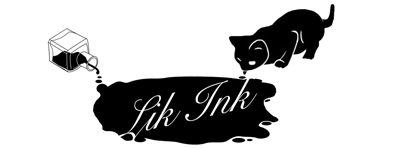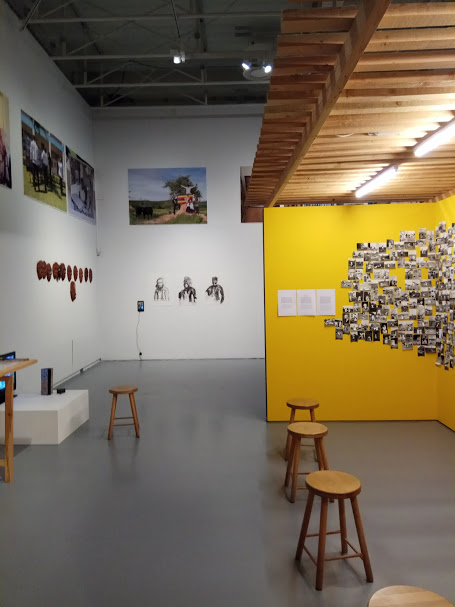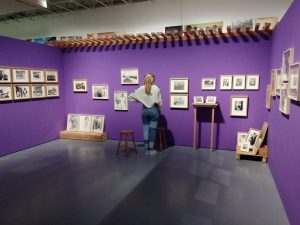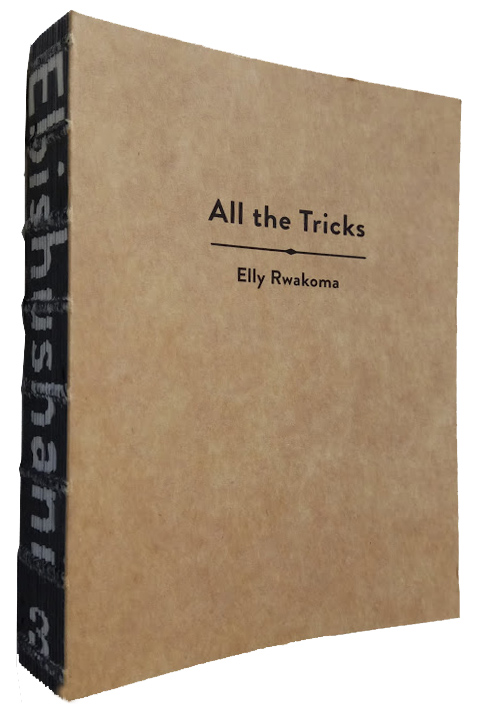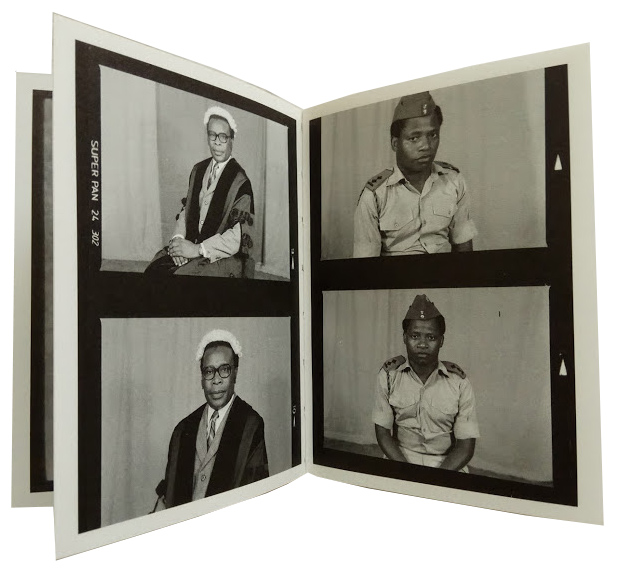Ebifananyi – Andrea Stultiens was an exhibition that took place at FOMU foto museum in Antwerp, Belgium between October 2017 and February 2018. The exhibit showcased photographic and image archives that had been located in Uganda that included professional and amateur photographers, and the records of academic and medical institutions. The show was also accompanied by a set of eight A6 size books that focused on a particular photographer or source.
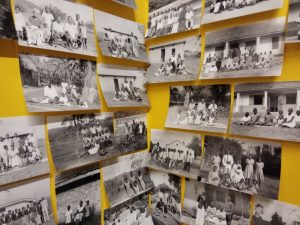 Upon entering the exhibition the audience is informed (via wall text) that the photography is from (or in and around) Uganda. But further explanation advises that the viewers make no assumptions about how the exhibition is being posited, explained, or provided meaning.
Upon entering the exhibition the audience is informed (via wall text) that the photography is from (or in and around) Uganda. But further explanation advises that the viewers make no assumptions about how the exhibition is being posited, explained, or provided meaning.
The exhibition follows that advice by letting the audience sink into the sheer weight of the material. While thoughtfully installed, the material is practically splattered, placed high and low, framed and unframed, carefully levelled or tacked to the wall.
The introductory statement distances the viewer from a precise didactic input or outcome, speaking to the source and location of the photos, and that they will be viewed (in this case, for the most part) by white Europeans.
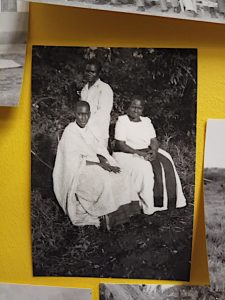 Belgium has a tragic colonial legacy in the Congo, an ethical quandary as far as explaining or demonstrating that history. If one proposes letting Ugandans speak for themselves, but presents the photos en mass, as two-dimensional surfaces, the viewer then falls back on their own understanding, biases, lack of experience, or indeed, confusion. The pertinent point becomes: how often are we (or speaking for myself) provided with this extensive a visual insight into contemporary Africa?
Belgium has a tragic colonial legacy in the Congo, an ethical quandary as far as explaining or demonstrating that history. If one proposes letting Ugandans speak for themselves, but presents the photos en mass, as two-dimensional surfaces, the viewer then falls back on their own understanding, biases, lack of experience, or indeed, confusion. The pertinent point becomes: how often are we (or speaking for myself) provided with this extensive a visual insight into contemporary Africa?
Finally, it emerges that the exhibition is part of an archival project; and just like the presentation of the exhibit, archives can be piled one of top of another. I say “emerges” but it should also have been obvious. Yet I got lost, as I say, in two dimensional surfaces and their provocative but less-than-fully-explained narratives.
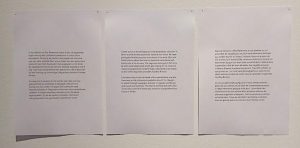 And though the exhibition was pell-mell, the viewer obliged to get lost, there were wall texts that conformed to the exhibit’s ethos: simple A4 size print-outs, tacked to the wall that outlined each section, where the specific images were found and who original photographer is (or was).
And though the exhibition was pell-mell, the viewer obliged to get lost, there were wall texts that conformed to the exhibit’s ethos: simple A4 size print-outs, tacked to the wall that outlined each section, where the specific images were found and who original photographer is (or was).
The title of the exhibition (along with Ebifananyi, a Luganda term for drawings, paintings or photographs) includes the name of archivist Andrea Stultiens, who thus takes on the role (common to our era) of consumer as well as producer. As she puts it, she engages in, “ . . . a hybrid artistic practice in which I continuously switch roles; from photographer to researcher, from curator to teacher.” This hybrid-art/anthropology involves Stultiens putting out the word and then being directed to a photographer’s studio, the closet in a relative’s house, or the pristine or crumbling records of an institution, in a project that has been named: History in Progress Uganda
I visited the exhibition twice, and the second time things became clearer, yet in some ways I regretted the loss of its playful disorientation. What was gained was an all-too common understanding of the material world: which objects will be saved, recovered, archived, lost or destroyed. Even when we step out of the so-called First World, things stack up; all the more reason, in Uganda, to archive the traces of its visual culture.
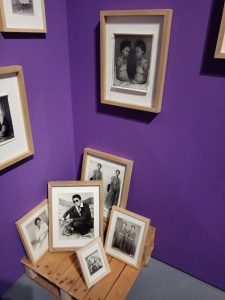 The accompanying books, which are dedicated to an individual photographer or photographic source, provide much more written information. All eight were on sale in the museum’s shop during the exhibition. While offering the viewer a take-away that encompasses far more than the usual brochure, the idea of a book (or set of books) as a component of the exhibition brings us back to hybridity. One might look at the format, the binding and set-up of the books, and claim them as “artist books”, that genre that attempts to bypass or subvert the assumptions of official exhibition venues. One can bring the exhibition into one’s home.
The accompanying books, which are dedicated to an individual photographer or photographic source, provide much more written information. All eight were on sale in the museum’s shop during the exhibition. While offering the viewer a take-away that encompasses far more than the usual brochure, the idea of a book (or set of books) as a component of the exhibition brings us back to hybridity. One might look at the format, the binding and set-up of the books, and claim them as “artist books”, that genre that attempts to bypass or subvert the assumptions of official exhibition venues. One can bring the exhibition into one’s home.
It was hard for me to make a choice amongst the eight books (which were also sold as a set) and so with a metaphorical toss of the dice I picked “All The Tricks”, which documents the work of photographer Elly Rwakoma, who among other things photographed politicians Milton Obote, Godfrey Binaisa, and most (in)famously Idi Amin. In the typical scope of African politics, Rwakowa was present (and took photographs) at assassination attempts and eventually had to flee for his life. Putting aside these dramatic episodes, the book explicates the fascinating narrative of Rwakowa learning the photographer’s trade by building improvised enlargers, developing at night after everyone is asleep (in the required darkness), using a candle to expose his negatives, and at one point, when running short of chemicals, using urine as a fixer bath for his prints.
